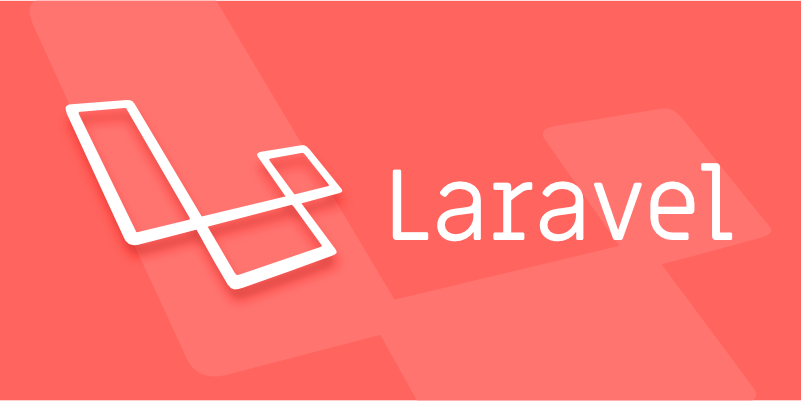Choosing between Laravel Sanctum and Passport for API authentication
Jul 14, 2025 am 02:35 AMLaravel Sanctum is suitable for simple, lightweight API certifications such as SPA or mobile applications, while Passport is suitable for scenarios where full OAuth2 functionality is required. 1. Sanctum provides token-based authentication, suitable for first-party clients; 2. Passport supports complex processes such as authorization codes and client credentials, suitable for third-party developers to access; 3. Sanctum installation and configuration are simpler and the maintenance cost is low; 4. Passport has comprehensive functions but complex configuration, suitable for platforms that require fine permission control. When selecting, you should determine whether the OAuth2 feature is required based on the project requirements.

If you're building an API with Laravel and trying to choose between Sanctum and Passport for authentication, the main thing to understand is this: Sanctum is simpler and works well for SPAs, mobile apps, and token-based APIs , while Passport gives you full OAuth2 server functionality if your app needs things like third-party access or more complex authorization flows.

Here's how to decide which one fits your project better.

When to use Laravel Sanctum
Sanctum is perfect when you want a lightweight, easy-to-setup solution for authenticating first-party clients—like your own SPA (eg, Vue or React frontend) or mobile app.
- It uses API tokens with optional expiration
- Works great with stateless authentication via
Authorization: Bearer [token] - Easy to set up: just install, run a migration, and assign tokens to users
It doesn't support full OAuth2 features like authorization codes or client credentials flow. So if you don't need those, Sanctum is faster to implement and easier to maintain.

For example, in a small SaaS app where only your own users log in from your frontend or mobile app, Sanctum covers all your needs without extra overhead.
Use Sanctum if:
- You're building a simple API
- You don't need OAuth2
- You control both the frontend and backend
When Laravel Passport is the right choice
Passport is the go-to option if your application needs to act as a full OAuth2 server—for example, if third parties will access your API on behalf of users, or if you're offering developer-facing APIs that require client ID/secret pairs.
- Full support for OAuth2 flows: authorization code, client credentials, password grant, etc.
- Built-in UI for developers to create their own API clients
- More complex setup and configuration than Sanctum
This is useful in cases like a public API platform where external developers can register applications and request scopes/permissions. Think of services like Stripe or GitHub—they allow third-party integrations using OAuth tokens, and Passport supports that out of the box.
Use Passport if:
- You need OAuth2 features
- You're building an API for third-party developers
- You need fine-grained access control with scopes and tokens per client
Setup and maintenance differences
Both packages are maintained by Laravel, but they differ in complexity and ongoing maintenance:
Sanctum setup steps:
- Install via Composer
- Run migrations
- Add
HasApiTokenstrait to User model - Issue tokens via login endpoint
Passport setup steps:
- Install via Composer
- Run more migrations (for OAuth tables)
- Encrypt keys (
php artisan passport:install --encrypt) - Configure providers and guards
- Set up password grant client if needed
Sanctum is easier to manage long-term because it has fewer moving parts. Passport requires more attention, especially around key management and token revocation.
Also, if you ever need to move from Sanctum to Passport later, it's doable—but you'll have to reflector your auth layer.
So depending on what kind of API you're building, one might clearly fit better than the other. For most internal or single-purpose APIs, Sanctum is enough. If you're planning to open your system to third-party clients or need advanced OAuth features, Passport is the way to go.
That's basically it — not rocket science, but worth thinking through before locking in your decision.
The above is the detailed content of Choosing between Laravel Sanctum and Passport for API authentication. For more information, please follow other related articles on the PHP Chinese website!

Hot AI Tools

Undress AI Tool
Undress images for free

Undresser.AI Undress
AI-powered app for creating realistic nude photos

AI Clothes Remover
Online AI tool for removing clothes from photos.

Clothoff.io
AI clothes remover

Video Face Swap
Swap faces in any video effortlessly with our completely free AI face swap tool!

Hot Article

Hot Tools

Notepad++7.3.1
Easy-to-use and free code editor

SublimeText3 Chinese version
Chinese version, very easy to use

Zend Studio 13.0.1
Powerful PHP integrated development environment

Dreamweaver CS6
Visual web development tools

SublimeText3 Mac version
God-level code editing software (SublimeText3)

Hot Topics
 How to test Laravel API interface?
May 22, 2025 pm 09:45 PM
How to test Laravel API interface?
May 22, 2025 pm 09:45 PM
Efficient methods for testing Laravel API interfaces include: 1) using Laravel's own testing framework and third-party tools such as Postman or Insomnia; 2) writing unit tests, functional tests and integration tests; 3) emulating a real request environment and managing database status. Through these steps, the stability and functional integrity of the API can be ensured.
 How to customize Laravel's user authentication logic?
May 22, 2025 pm 09:36 PM
How to customize Laravel's user authentication logic?
May 22, 2025 pm 09:36 PM
Custom Laravel user authentication logic can be implemented through the following steps: 1. Add additional verification conditions when logging in, such as mailbox verification. 2. Create a custom Guard class and expand the authentication process. Custom authentication logic requires a deep understanding of Laravel's authentication system and pay attention to security, performance and maintenance.
 Laravel integration with social media login (OAuth)
May 22, 2025 pm 09:27 PM
Laravel integration with social media login (OAuth)
May 22, 2025 pm 09:27 PM
Integrating social media login in the Laravel framework can be achieved by using the LaravelSocialite package. 1. Install the Socialite package: use composerrequirelaravel/socialite. 2. Configure the service provider and alias: add relevant configuration in config/app.php. 3. Set API credentials: Configure social media API credentials in .env and config/services.php. 4. Write controller method: Add redirection and callback methods to handle social media login process. 5. Handle FAQs: Ensure user uniqueness, data synchronization, security and error handling. 6. Optimization practice:
 How to create Laravel package (Package) development?
May 29, 2025 pm 09:12 PM
How to create Laravel package (Package) development?
May 29, 2025 pm 09:12 PM
The steps to create a package in Laravel include: 1) Understanding the advantages of packages, such as modularity and reuse; 2) following Laravel naming and structural specifications; 3) creating a service provider using artisan command; 4) publishing configuration files correctly; 5) managing version control and publishing to Packagist; 6) performing rigorous testing; 7) writing detailed documentation; 8) ensuring compatibility with different Laravel versions.
 Common security threats and protection measures for Laravel applications
May 22, 2025 pm 09:33 PM
Common security threats and protection measures for Laravel applications
May 22, 2025 pm 09:33 PM
Common security threats in Laravel applications include SQL injection, cross-site scripting attacks (XSS), cross-site request forgery (CSRF), and file upload vulnerabilities. Protection measures include: 1. Use EloquentORM and QueryBuilder for parameterized queries to avoid SQL injection. 2. Verify and filter user input to ensure the security of output and prevent XSS attacks. 3. Set CSRF tokens in forms and AJAX requests to protect the application from CSRF attacks. 4. Strictly verify and process file uploads to ensure file security. 5. Regular code audits and security tests are carried out to discover and fix potential security vulnerabilities.
 How to implement password reset function in Laravel?
May 22, 2025 pm 09:42 PM
How to implement password reset function in Laravel?
May 22, 2025 pm 09:42 PM
Implementing password reset function in Laravel requires the following steps: 1. Configure the email service and set relevant parameters in the .env file; 2. Define password reset routes in routes/web.php; 3. Customize email templates; 4. Pay attention to email sending problems and the validity period of tokens, and adjust the configuration if necessary; 5. Consider security to prevent brute-force attacks; 6. After the password reset is successful, force the user to log out of other devices.
 What is Middleware in Laravel? How to use it?
May 29, 2025 pm 09:27 PM
What is Middleware in Laravel? How to use it?
May 29, 2025 pm 09:27 PM
Middleware is a filtering mechanism in Laravel that is used to intercept and process HTTP requests. Use steps: 1. Create middleware: Use the command "phpartisanmake:middlewareCheckRole". 2. Define processing logic: Write specific logic in the generated file. 3. Register middleware: Add middleware in Kernel.php. 4. Use middleware: Apply middleware in routing definition.
 Sensitive data protection policies in Laravel
May 22, 2025 pm 09:30 PM
Sensitive data protection policies in Laravel
May 22, 2025 pm 09:30 PM
Laravel provides a variety of strategies to ensure data security: 1. Use Cryptfacade to encrypt data to protect sensitive information. 2. Enable access control through authorization policies (AuthorizationPolicies) to prevent data leakage. 3. Adjust logging policy and use log rotation to avoid sensitive data leakage.






